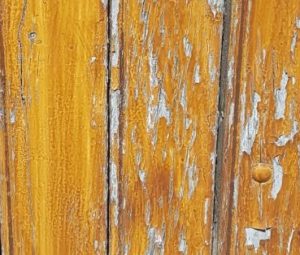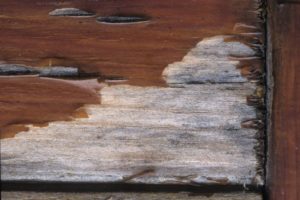

Over the past years translucent wood finishes have become fashionable and because of this many joinery companies supply components which can be easily treated with these finishes or with a conventional paint system.
When these natural wood finishes are used, certain problems come to light and in many cases cause the contractors additional expense. (These additional costs have been due to lack of knowledge relating to the performance of such coatings).
In most cases the problems are generally associated with the nature and condition of the original surface. Specifiers expect them to last as long as an opaque painted system but time has revealed that the overall performance depends on the nature, texture and possible pre-treatment of the timber.
Wood finishes fall into 3 categories. Low, medium and high build. In accordance with BS EN 927-1 1997 (BS6952) the low film build types are generally recognised as stains and suitable for treating fencing, cladding etc. High build products are heavily pigmented and are opaque.
Medium build finishes are generally used for treating joinery sections.
The main requirements for these finishes are that the translucent film should be flexible enough to accommodate the overall expansion and contraction of the wood and contain pigments which act as UV filter and biocides to prevent blue staining.
When delivered to site, new windows and frames from leading joinery manufacturers are invariably coated with a preservative and an initial stain coating which is light brown in colour.
Once the windows and frames have been fixed they are often left for several months before the finishing coats are applied. This original stain/basecoat may appear to be in good condition and sound enough to apply the finish. However this may not always be the case and is where the majority of problems originate. These original stain/basecoats do not offer any lasting protection against the ultra-violet sun rays therefore the UV rays can pass through and cause the timber cells to break down. This is not always visible at first sight.
As it can be seen in the illustration although the coating appears to be all right, close inspection reveals blue staining on the glazing bar. This is the first sign that the frame has been exposed to the elements and has suffered loss of UV protection. When surfaces in this condition are overcoated, the potential problems are hidden.
It may be as little as six months later that the top coat starts to show signs of deterioration. The first indication is checking of the finished film which can be either as a result of poor flexibility or due to the hidden degradation of the wood cells resulting in poor cohesion. This hidden degradation is the cause of the majority of problems.
While these coatings are designed to erode it is important that re-coating takes place before breakdown occurs. If left total erosion of the coating takes place with the timber surface becoming infected and very fibrous. When this occurs then remedial work is extensive.
It is the view of many that when translucent finishes are used then planned maintenance should be considered.
Experience has shown that elevations exposed to the maximum UV rays require much earlier attention than sheltered areas. Depending on the prevailing conditions this maintenance may be required after 18 months.
Whenever asked to comment on the performance of these translucent wood finishes and in the event of a breakdown after carefully removing the defective coating always examine the reverse side of the dry film. If on examination timber fibres are attached then it is most likely that the ultra violet rays have passed through the film , causing degradation of the timber which is the root of the problem.
Note: Although manufacturers have different products the systems normally consist of one coat of preservative/basecoat followed by 2 coats of the finishing product. When reading the manufacturers’ data, in the majority of cases their literature refers to these products being applied onto new planed timber and do not always make reference to overcoating stained joinery as supplied to sites. As always it is advisable to consult with the manufacturer beforehand.